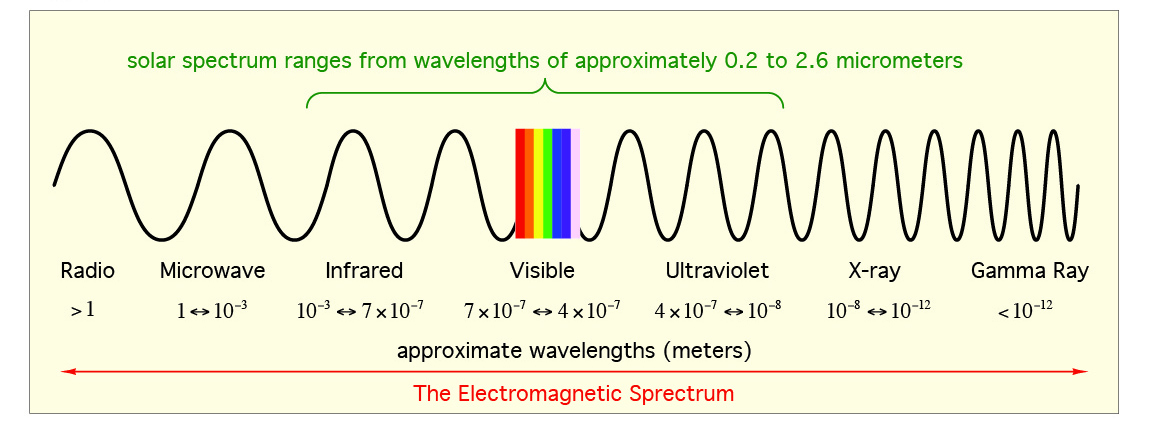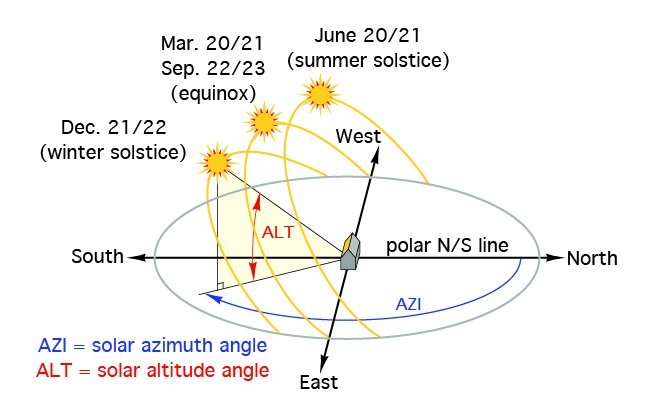Competency G2: Solar Thermal Systems
Solar energy has been used in buildings in Canada for decades. The oil crisis of the late 1970’s sparked a flurry of interest in the use of renewable energy sources, with solar thermal at the forefront. A lack of standards and regulations in those early years contributed to the failure and abandonment of many of the systems although some are still operating today. The more recent push for a “greener” planet has resulted in much more research and engineering of solar systems, with guidelines now established for their design and installation. The intent of this module is to familiarize the learner with the basic principles involved in the design and installation of solar thermal systems.
Learning Objectives
After completing this learning task, students will be able to:
- Describe the purpose of solar thermal systems
- Describe the types of solar thermal systems
- Describe the components used in solar thermal systems
Nuclear reactions within the sun emit energy in the form of electromagnetic radiation of varying wavelengths that stream outward through space. Figure 1 shows the relationship between the various types of electromagnetic wavelengths and those of the “visible light” portion of the light spectrum.

Although the intensity of electromagnet energy is very high when it leaves the sun, it is greatly reduced by the time it reaches the earth’s surface by encountering numerous factors such as gases, vapours and dust particles in the atmosphere, as well as by geographic location, time of day and time of year. The majority of radiation striking the earth’s surface travels in a straight line from the sun and is known as “direct” solar radiation. Direct radiation is easy to reflect using polished silver or aluminum surfaces, or to focus using parabolic mirrors. “Diffuse” solar radiation is the result of direct radiation striking gas, vapour and dust particles in the atmosphere, which reflect it in every direction. Diffuse radiation cannot be easily focused using mirrors and reflective surfaces, and so is therefore not a major contributor to solar system design.
Solar angles play a significant role in the operation of solar heating systems. It takes 365 days for the earth to orbit the sun, and within that period the earth’s tilt, called the declination angle, changes. Declination angles are responsible for the changes in seasons and hours of daylight, and significantly affect the intensity of direct solar radiation striking a fixed surface at any location on earth. The declination angle can be seen as the change in the sun’s path across the sky between summer and winter, as shown in Figure 2.

There are two other solar angles at play, also shown in Figure 2, that can be measured simultaneously and described; the solar altitude angle which is measured from a fixed surface to the centre of the sun, and the solar azimuth angle which is measured from true north (0°) in a clockwise direction (the south pole would be 180°). These angles change continuously as the sun moves across the sky, are different at different latitudes and longitudes, and change over time as the earth’s magnetic field changes. It is important to note that the solar azimuth angles are measured from “true north” (the polar axis point for the earth’s rotation) and can differ by many degrees from “magnetic north”. The deviation between compass-indicated north/south and “true” north/south is called magnetic declination. Online calculators such as Magnetic Declination can be consulted to determine the magnetic declination for any point on the globe. For example, Kelowna, BC has a latitude of 49.8880°N and a longitude of 119.4960°W. Plugging these values into the website above results in a magnetic declination of 15° 3.91′ east. This implies that “true” south is actually 15° 3.91′ (15.07°) east of magnetic south. This information is necessary for use in accurately positioning the solar panels that collect the sun’s rays.
Media Attributions
- Figure 1 The electromagnetic spectrum © Caleffi Hydronic Solutions. Used with permission.
- Figure 2 Example of solar declination with solar altitude and azimuth angles © Caleffi Hydronic Solutions. Used with permission.

